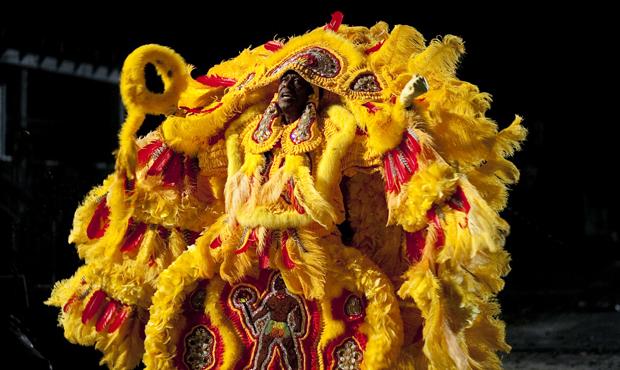The crawfish boil is only about five
and a half weeks away. So we figured it would be a good idea to highlight some
of the other events in the Greater New Orleans area that out of town guests
might enjoy. While looking for other events, we stumbled across a big one that you
will definitely want to check out.
| A Krewe on Parade |
Sunday March 15 (the day after the
boil) is Super Sunday in New Orleans. What is Super Sunday? It is only one of
few times during the year that you can see Mardi Gras Indians on parade. The
Indians are perhaps the least famous (at least to people not from New Orleans)
part of Mardi Gras celebrations. They are the African American community’s equivalent
of the famous Krewes (and largely white). Krewes are organized along the lines
of royalty with kings, queens, dukes, knights, and captains. Membership is
severely limited. The krewes are generally named after Roman or Greek
mythological figures. Each has their own parade featuring specially designed
floats. This list will give you a sense of the different krewes.
Their parades begin in the weeks leading up to Mardi Gras.
 |
| Mardi Gras Indians via HBO's Treme |
Since African-Americans were largely
excluded from these white activities, they developed their own ways to
celebrate Mardi Gras. African Americans named their krewes for imaginary Indian
tribes. This was to honor the Indians efforts to help African Americans escape
enslavement in the 18th and 19th centuries. Mardi Gras
Indians began to appear in the late 1800s. The first such group was the Creole
Wild West from the Seventh Ward. As a way to visualize the bond between the two
groups, the African Americans dressed as up as Indians. Their Mardi Gras
celebrations featured music, dance, hand sewn costumes, and masks. Mardi Gras
Indians organized themselves along neighborhood lines. Older members taught
younger ones their traditions, creating legacies within families. Throughout
the early 20th century, the Indians remained very much on the
margins. They stayed mostly within the black neighborhoods of the city. Their members
were often poor and working class. They were carpenters and laborers by day and
Mardi Gras Indians by night.
| A Mardi Gras Indian Flag Boy |
Instead
of floats, the Indians feature beautifully elaborate masks and costumes.
Covered in sequins, beads, and feathers, rhinestones, jewels, plumes, satin,
and velvet these costumes require a tremendous amount of detail work that takes
months. The suits weigh somewhere between 80 and 300 pounds. Each tribe
includes a Spy Boy, who locates rival tribes. A Flag Boy carries the tribe’s
flag. A Wild Man clears a path through the crowd for the Big Chief. The Big
Chief is the leader of the tribe. He is generally the oldest and most skilled
at sewing and creating costumes. He also must be able to sing and chant the
traditional Mardi Gras Indian songs. He can never wear the same costume twice. The
big chief spends his time between each year’s Mardi Gras crafting his new
costume. On Mardi Gras and Super Sunday, the Indians parade through the city.
In the early days, Mardi Gras Indians would settle their scores with violence.
Other time community leaders channeled this anger into competitions between
tribes over who had the prettiest chief. Now when tribes encounter each other
in the streets, they generally engage in a mock-battle. This involves a song or
chant and call for respect from one chief. The other chief responds with a
similar song, chant, and call for respect. They each try to assert their
superiority as the prettiest or best big chief. The two men dance and chant
before acknowledging each other and continuing along their way. Since Youtube won't let me embed the video, follow this link to watch a clip from the HBO show Treme featuring Mardi Gras Indians.
This
is definitely a tradition worth checking out. For more information on the
details of the parade, go here. We’ll be
back next week with some other recommendations for things to do in New Orleans.

No comments:
Post a Comment